"It was very special to stand on the Greenland ice sheet for the first time"
Photo report by PhD candidate Maurice van Tiggelen about his fieldwork in Greenland
By Maurice van Tiggelen (IMAU)
With its 150 inhabitants, the small settlement of Narsarsuaq is mostly known for being the only airport in a radius of 500 km. The airport was built by the American army during World War II. But it is also important for being located only 50 km from the Greenland ice sheet, the main objective of this fieldwork. The climate above this southernmost part of the ice sheet is influenced by the warm North-Atlantic Ocean. This means that it can snow quite a bit in winter, but the ice melts even more during summer.
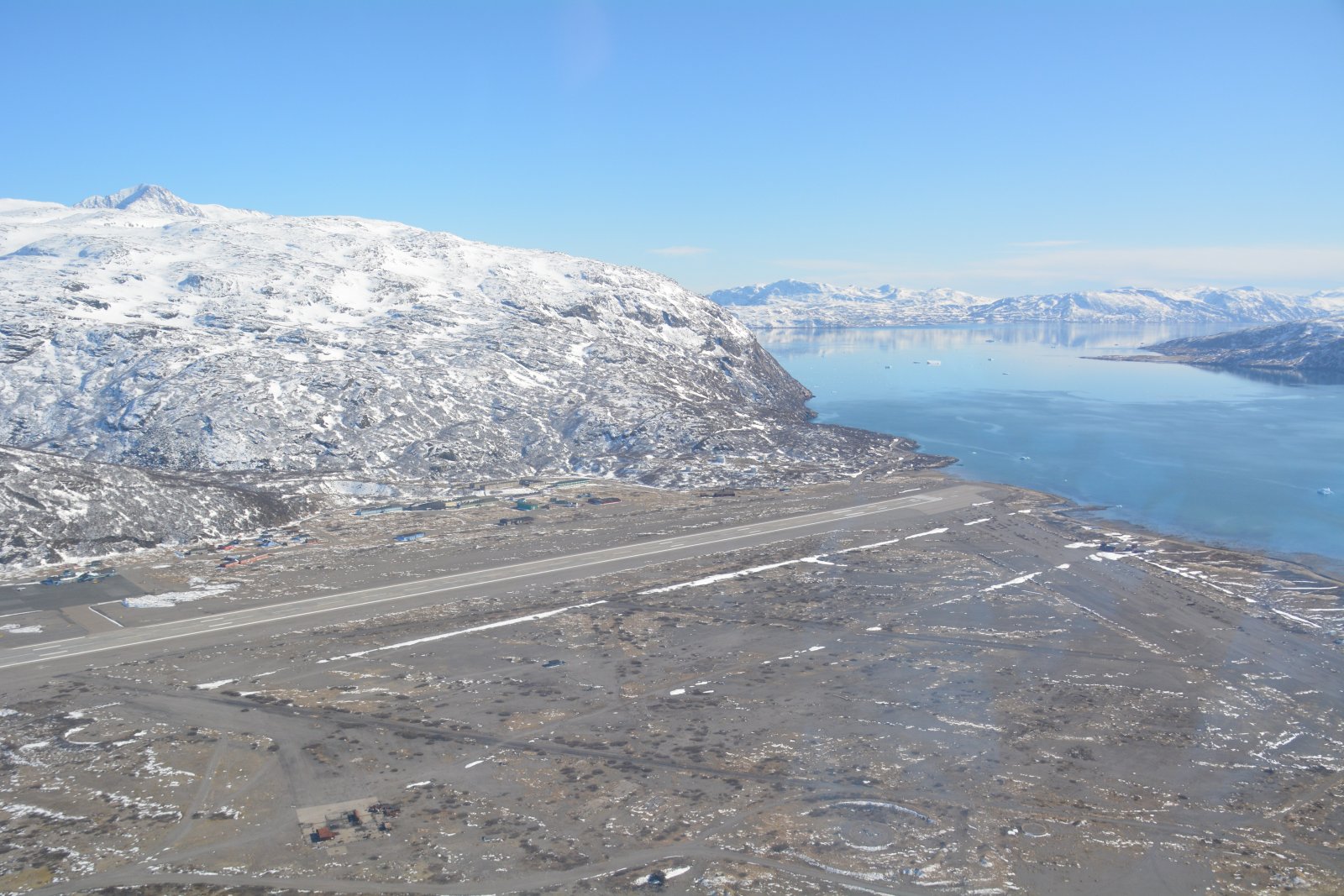
New weather station
No less than nine metres of ice melt was measured at this location during the record summer of 2012, of which one metre of melt occurred in a few days only. These extreme melt events are caused by turbulent heat-exchange, which mixes the warmer air downwards with the colder air right above the melting ice. It turns out to be very challenging to simulate this process with current climate models, partly because there are only few direct measurements. With this new weather station that I installed on the ice sheet together with Paul Smeets we will measure this heat-exchange process directly.
Exceptional weather
I arrived a few days earlier, which gave me some time to explore the area. The weather was exceptional: clear skies and almost 10 degrees. The winter clothes and thermal underwear were not necessary at all. The landscape there is astonishing: long fjords with icebergs, surrounded by snowy mountain tops. It was also very quiet, this early before the tourist season. However, this meant that the only restaurant and two of the three cafes in the village were closed. Fortunately, the small supermarket was open! We stayed in the Narsarsuaq Hostel, which local guide Jacky opened especially for us.
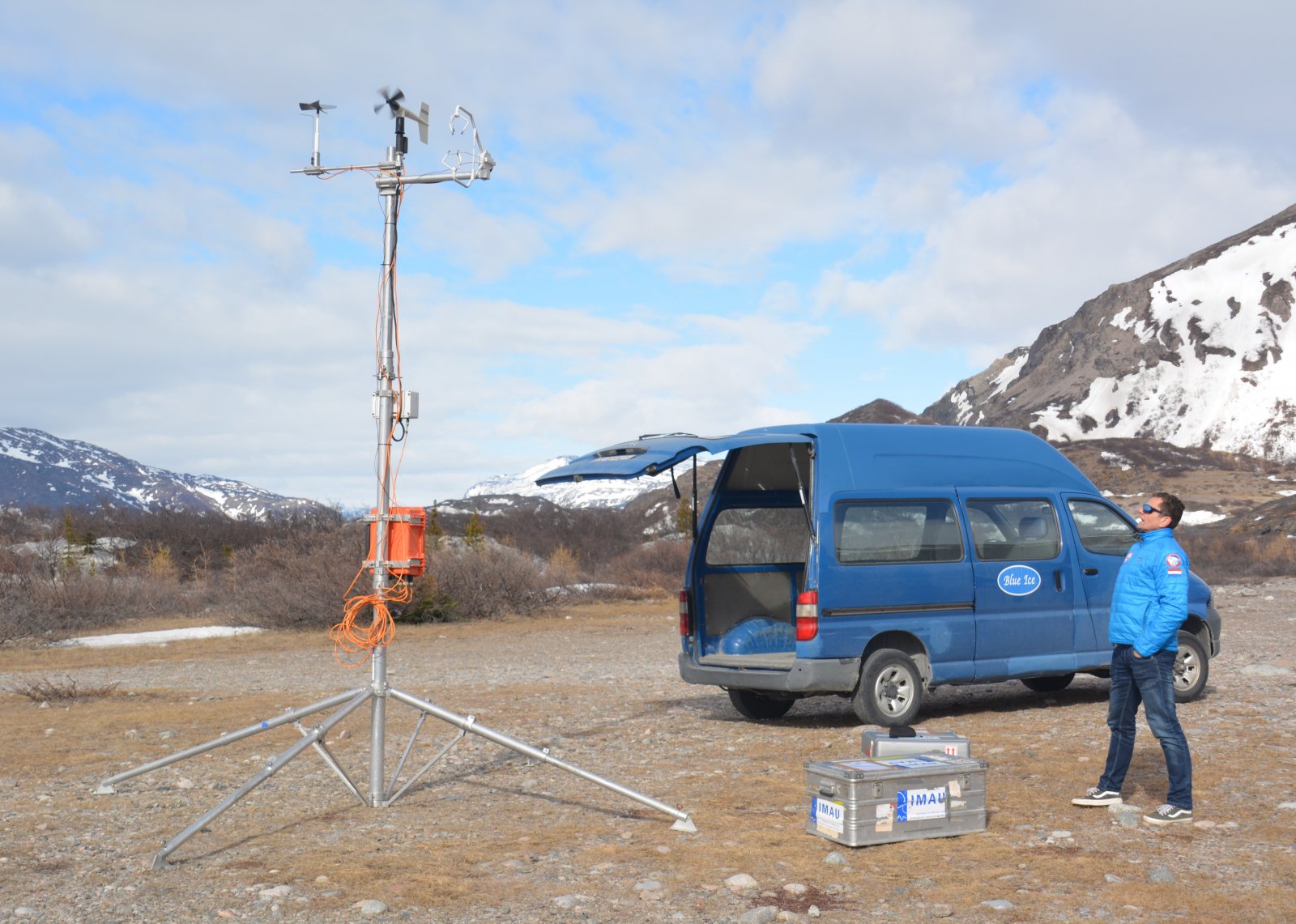
Stretched out
We planned to fly with the helicopter to the ice sheet on Tuesday, 23 April. However, it started to snow that day, which gave us two additional days to test the equipment one last time.
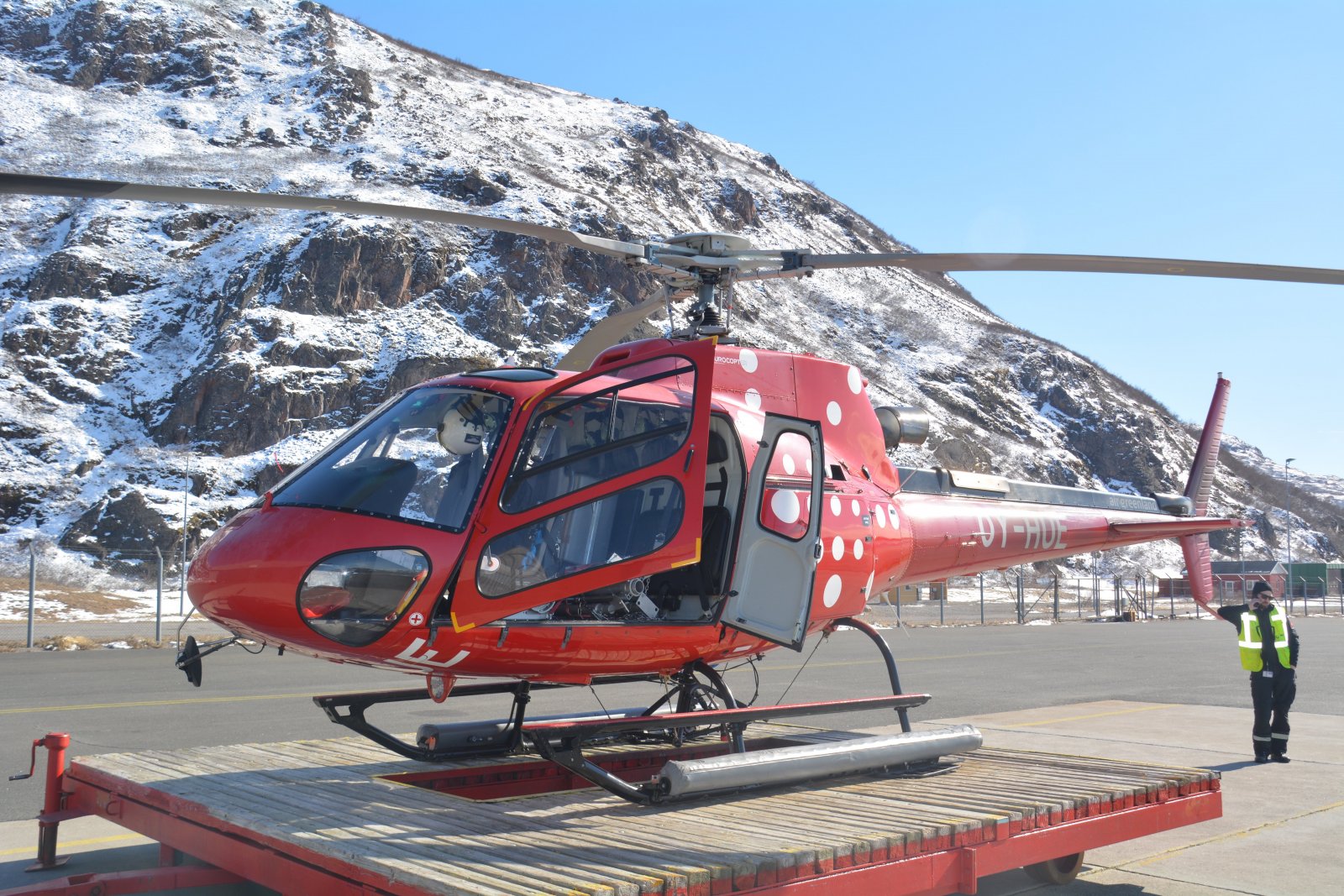
Then Thursday was our D-day! I found it very special when I stepped out of the helicopter and stood on the Greenland ice sheet for the first time. I was mostly impressed by how stretched out the ice sheet appears from the helicopter, and even more so once you are standing on the ice.
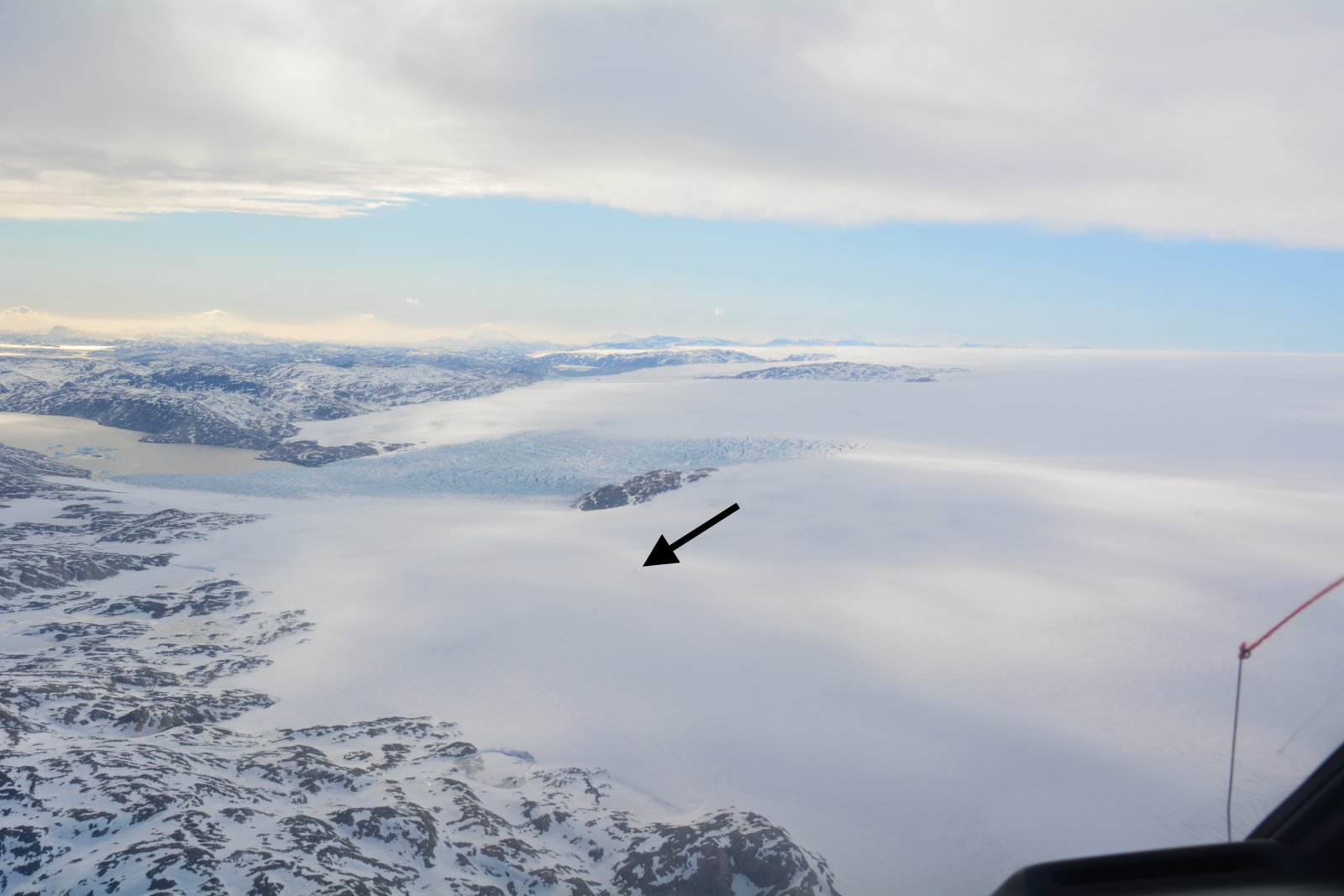
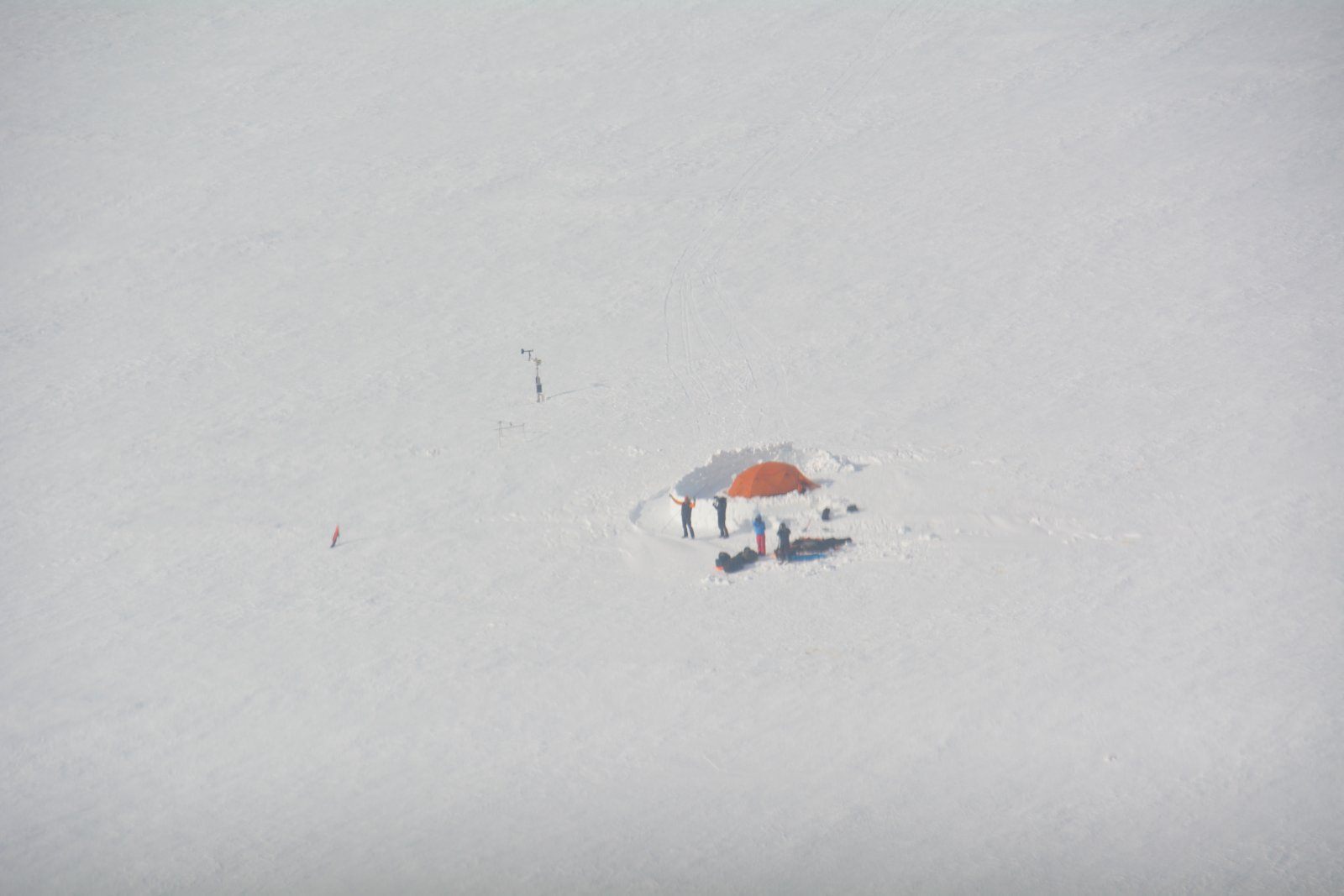
Some colleagues from Denmark were already at the fieldwork location to make snow measurements, after which they helped us with installing the station. After a few hours we were back in the village, and two days later I was celebrating King’s Day in an airplane between Greenland and Denmark.
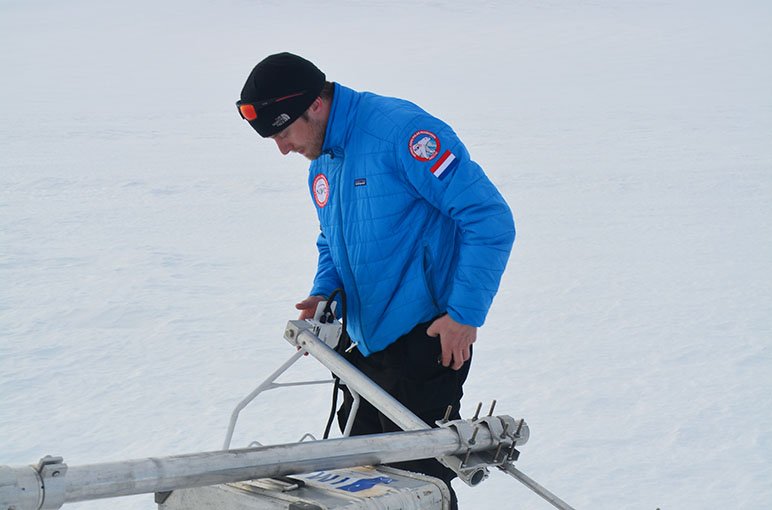
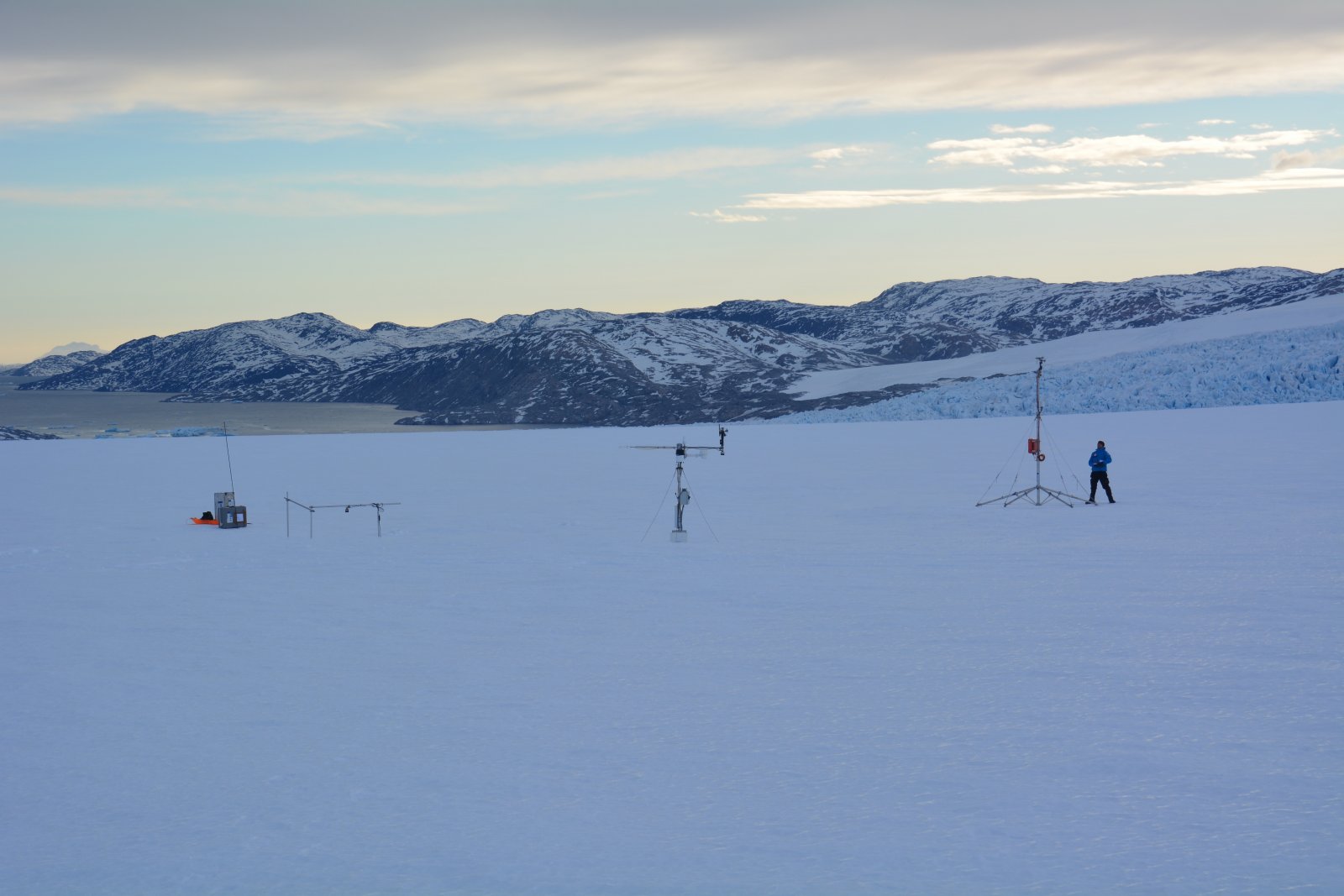
We plan to go back in September for maintenance and to place two similar weather stations in the West of Greenland.

